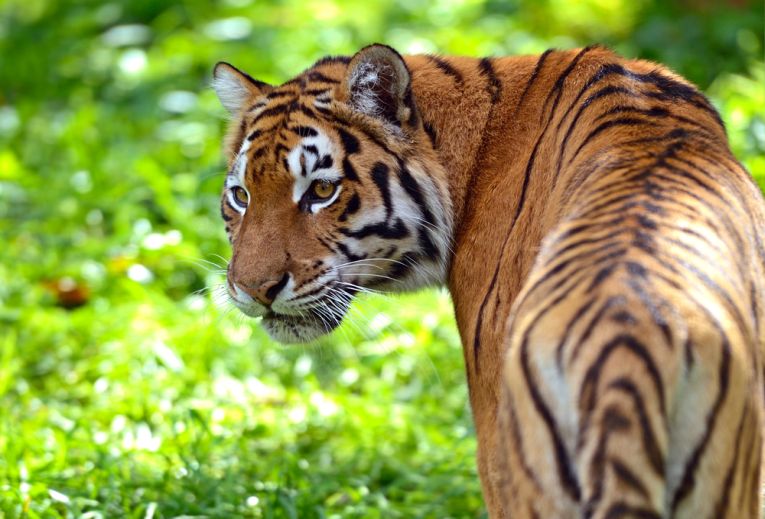Jack Tseng and several other researchers at the University of Southern California, the American Museum of Natural History (where Jack is the Frick Research Fellow), the Smithsonian Institution, the Chinese Academy of Sciences and Gansu Provincial Museum in Lanzhou, among others, have been looking at the genus Panthera, making up the lions, tigers, jaguars, leopards and snow leopards of this world. They used a recent discovery of the oldest fossil to try and uncover the complex genealogy of all the big cats.
In another, antique, world, from the Pleistocene, these pantherines were joined by even more big cats. Just one superb example is Panthera onca gombaszogensis which was found in Italy, but resembles the South American jaguar very closely. The well-known, unrelated, species that died out most recently, 10,000 years ago, are the American Smilodon spp., the fabled sabre-toothed cats. While current cats are critically-endangered, these ancient cats are extinct. We really can benefit from locating their evolutionary history from the contradictory and slow-moving world of fossils and new palaeontological discoveries such as the new find, Panthera blytheae. Genetic studies are nowadays also naturally used to show relationships that could not be imagined using other methods.
The plague of fossil researchers are "ghost lineages," that seem to spring up whenever there is a new fossil find. In only 3.8 million years, many speciations seem to have given us the modern fauna. However, in the Zanda basin of the Himalaya, the newly-discovered species may help by extending the pantherines back by a further 2 million years. At that time, in the Late Miocene, there were early felids such as the snow leopards and Neofelis, the clouded leopard, just before the appearance of the other members of the pantherine genus. Then came their migrations to become the African lions and leopards, the European lion, sadly long-gone, and finally, via what is now the Bering Straits to the Americas, where the jaguar fortunately thrived.
The authors' analyses show these cats extending back further than was thought into the Asian Miocene, probably on the Tibetan Plateau and its associated ranges, even as these peaks were completing their rise out of the continental mass. The link with mountain building period could prove crucial. The isolation by geology was possibly incidental in causing these unique animals to evolve among the steep cliffs and herbivore-filled plains.
Dr. Z.Jack Tseng and his colleagues present their paper in the Proceedings of the Royal Society B. There's more on the tiger species' unique genetic limitations in Tiger, tiger, burning less bright.










